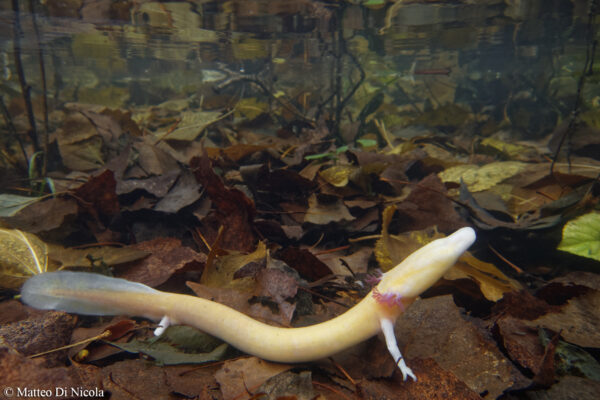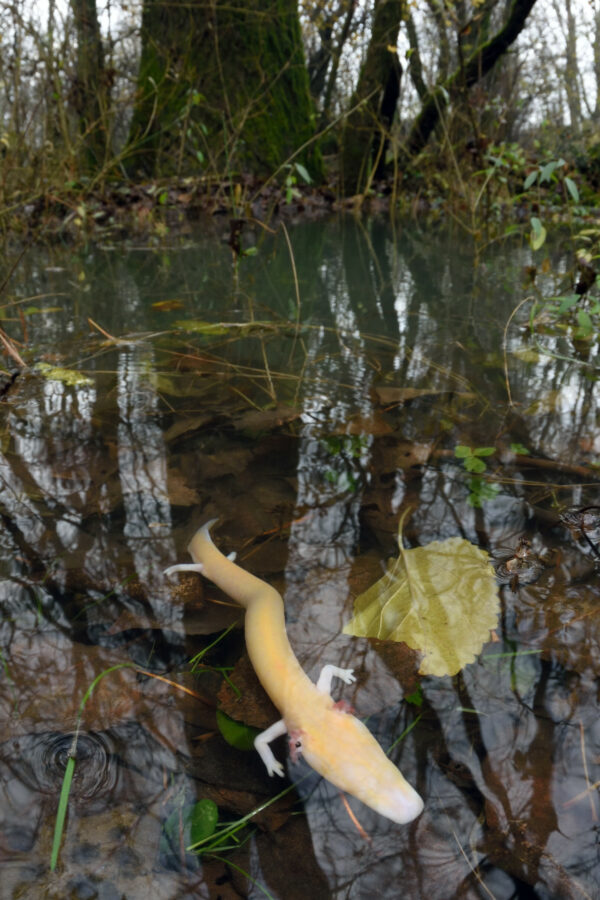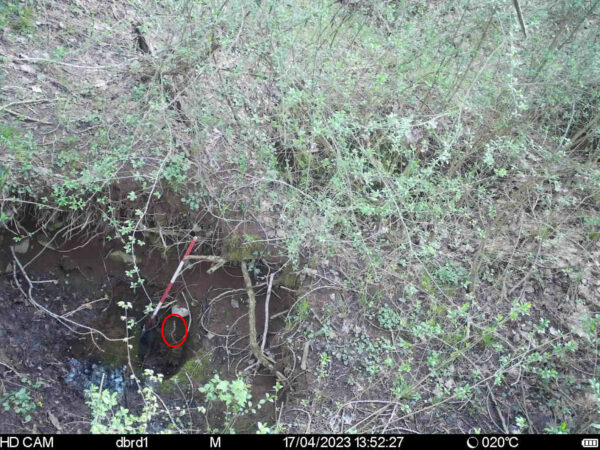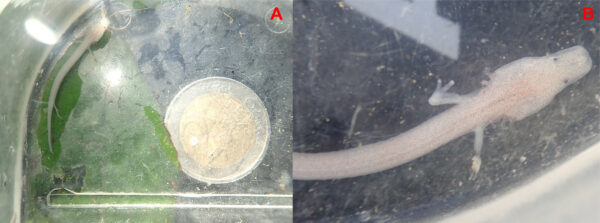Animals inhabiting caves have long fascinated naturalists and biologists, with their unique adaptations sparking curiosity since the early days of modern science (Poulson & White, 1969; Vandel, 1964). Subterranean environments, including caves, are often considered extreme ecosystems. Their relative simplicity provides a natural laboratory for studying ecological and evolutionary processes in action (Howarth, 1993; Mammola, 2019; Moldovan et al., 2018).
Species adapted to life underground commonly exhibit distinctive traits such as blindness, lack of pigmentation, disruption or absence of circadian rhythms, and reduced metabolic rates (Culver & Pipan, 2019; Moldovan et al., 2018; Romero, 2009). These characteristics, known as troglomorphisms, often reflect the degree of specialization to subterranean life (Mammola, 2019; Trajano & De Carvalho, 2017; Trontelj et al., 2012).
Organisms showing such adaptations and believed to be strictly confined to life below the surface are classified based on their habitat: “troglobionts” for terrestrial dwellers and “stygobionts” for aquatic species — the latter term referencing the mythological river Styx (Culver & Pipan, 2014; Romero, 2009).
Historically, these highly specialized animals were regarded as examples of so-called regressive evolution, in which complexity appears to be lost (Poulson, 2001, 2011; Vandel, 1964). Consequently, their evolutionary paths have often been viewed as ecological cul-de-sacs, with limited potential for broader adaptability or range expansion (Barr Jr & Holsinger, 1985; Culver & Pipan, 2009; Poulson & White, 1969).

The olm (Proteus anguinus) stands as one of the most iconic stygobiont species. With the exception of a distinct clade inhabiting a few springs in southern Slovenia—known as the “black olm” (Proteus anguinus parkelj, Sket & Arntzen, 1994)—these salamanders are a complex of blind, depigmented, groundwater specialists thought to have colonized subterranean habitats between 8 and 20 million years ago (Balazs et al., 2020; Bulog, 1994; Recknagel et al., in press; Trontelj et al., 2007). Olms are the largest known troglobiont vertebrates and the only stygobiont amphibians in the Palearctic region (Balazs et al., 2020).
Their adaptations to cave life are remarkable. These include the ability to sense magnetic fields to partially compensate for blindness (Bulog, 1994; Durand & Parzefall, 1987; Guillaume, 2002; Schlegel, 2008), low metabolic rates (Bizjak Mali et al., 2013), high tolerance to hypoxic conditions (Beale et al., 2016), and extraordinary longevity (Vandel & Durand, 1970). As obligate paedomorphs, olms retain larval traits into adulthood, and their study offers insight into the links between paedomorphosis and subterranean adaptation (Bonett et al., 2014, 2022). Reproduction in olms appears infrequent, with females laying eggs approximately once every 12 years (Lanza et al., 2009; Vandel & Bouillon, 1959). In their habitat, olms are considered apex predators (Manenti et al., 2020).
To date, most behavioral and ecological knowledge about this species has been derived from captive studies under artificial conditions (e.g., Guillaume, 2002; Hervant et al., 2001; Manenti et al., 2020; Schlegel, 1997; Uiblein et al., 1992; Voituron et al., 2023). Field-based observations remain rare (Balazs et al., 2015, 2020; Voros et al., 2019).
Traditionally, species highly adapted to subterranean environments have been assumed to be strictly confined to them (Barr Jr & Holsinger, 1985; Mammola et al., 2018; Poulson & White, 1969). However, recent findings suggest that the boundary between surface and subterranean ecosystems may be more fluid. For instance, surface-dwelling species such as the Pyrenean newt (Calotriton asper) are known to regularly utilize groundwater systems (Guillaume, 2022; Uiblein et al., 1995). In contrast, the notion that obligate troglobionts can actively exploit surface habitats remains controversial. Some researchers argue that such occurrences are accidental, due to environmental disturbances. Still, the ecological processes at the interface between surface and underground systems remain poorly understood—largely due to a lack of field data.
The primary goal of this study was to offer empirical evidence that a specialized subterranean vertebrate like the olm can actively utilize surface environments for specific ecological purposes. Our findings provide a basis for re-evaluating rigid distinctions between surface and subterranean habitats and deepen our understanding of the interactions between them.
Between June 2020 and May 2023, we conducted systematic surveys in the eastern sector of the “Classical Karst” region in northeastern Italy—a limestone-dominated area rich in caves and springs known to harbor olms (Jurkovšek et al., 2016). Our study covered 10 caves and 69 surface springs across the municipalities of Doberdò del Lago and Monfalcone (Appendix S1: Figure S1). The karst landscape includes diverse hydro-ecological features such as poljes, karst lakes, sinkholes, and estavelles—hydrological structures that can act as either springs or drains, depending on aquifer levels (Knez & Slabe, 2005; Kovačič, 2014; Castello et al., 2021). For the purpose of this study, we monitored caves, springs, and estavelles.
We used visual encounter surveys (VES), lasting 20 minutes per site, to detect the presence of P. anguinus. Each spring was surveyed 11 to 25 times during both daytime (10 a.m.–4 p.m.) and nighttime (9 p.m.–2 a.m.). From September 2022 onward, we initiated a capture–mark–recapture (CMR) effort, attempting to catch and identify each observed individual.
Overall, P. anguinus was recorded in all 10 sampled caves and in 15 of the monitored springs (Figure 1). Observations occurred during both day and night. Diurnal sightings were confirmed in seven springs and were not isolated events—on average (±SE), olms were seen 3 ± 1.13 times per site during the day, across approximately 7 ± 1.54 diurnal surveys per site. While nighttime detections were more frequent (28% vs. 18% of total surveys), some springs showed unexpectedly high daytime detection rates, with one site yielding daytime observations in 64.3% of surveys. A camera trap confirmed these daytime surface occurrences by capturing footage of olms at one of the study springs (Figure 2).
Interestingly, surface records were not limited to adult individuals. On January 17, 2022, a larval olm measuring 3.56 cm was observed during daylight on the springbed. The larva displayed active behavior and bore a wound on its right foreleg before retreating into the substrate (Figure 3).
Additionally, we recorded feeding behavior in surface habitats. On two separate occasions, in a flooded spring and a groundwater-fed cave, five out of 12 handled individuals regurgitated earthworms. None of the earthworms belonged to known subterranean species, suggesting recent foraging activity in surface-linked environments.

An adult olm (Proteus anguinus) observed active during daylight hours in a spring located in the municipality of Doberdò del Lago, northeastern Italy.
Photograph by Matteo Riccardo Di Nicola.

An olm (highlighted in red) captured by a camera trap during midday hours in a surface spring habitat at one of the monitored sites.
Image courtesy of Raoul Manenti.

(A, B) Proteus anguinus larva observed actively exploring a spring in Sablici, near the A4 highway in the municipality of Monfalcone (NE Italy).
(A) Full body view of the larva.
(B) Close-up of the head and forelimbs, with a visible wound on the right foreleg.
Photographs by Raoul Manenti.
Field observations of olms outside caves remain extremely rare, except for instances involving black olms. Such occurrences are typically attributed either to individuals being accidentally flushed from groundwater systems (Lanza et al., 2009) or to brief nocturnal excursions at the interface between groundwater and surface environments at a single site (Premate et al., 2022). Until now, the idea that highly troglomorphic olm populations might actively exploit surface habitats has received little consideration (Bressi et al., 1999) and lacked empirical evidence.
In this study, we report repeated and active use of surface habitats at the boundary with groundwater by a species long believed to be strictly subterranean. Remarkably, olms were observed not only at night but also during daylight—when conditions such as light exposure and the presence of visual predators would typically be deemed unsuitable for cave-adapted species.
The discovery of a larva in a spring represents an extraordinary finding. To our knowledge, it is the smallest olm ever documented in the wild, the first larva observed outside a cave, and the only known larval record within the Italian portion of the species’ range. Based on captive data, individuals of similar size are estimated to be 90–110 days old. Notably, no flooding events occurred during this period—instead, the region experienced prolonged drought conditions (Monteleone et al., 2023). This suggests that the spring’s interstitial spaces and crevices may offer suitable microhabitats for breeding.
At hatching, olm larvae possess functional eyes (Durand, 1963; Friedrich, 2013), potentially enabling them to perceive prey and predators in transitional zones between surface and subsurface environments. However, surface habitats are likely riskier than groundwater systems. Therefore, breeding is presumed to occur underground, with some larvae venturing out after hatching (Barzaghi et al., 2017).
Our natural history observations suggest that olms may regularly utilize surface environments for essential activities like foraging. The repeated observation of earthworm predation supports this, indicating that surface habitats could be an important supplemental food source. Future studies using stomach-flushing techniques or fecal metabarcoding (Ficetola et al., 2019) should further quantify this contribution. Indeed, recent findings have shown that subterranean animals frequenting springs often derive a substantial portion of their diet from terrestrially derived organic matter (Nair et al., 2021).
These results underscore the need to reconsider the role of surface-subsurface transitional zones in the ecology of subterranean species. While Proteus anguinus is the only known stygobiont amphibian in Europe, numerous Nearctic salamanders considered obligate stygobionts (Bonett et al., 2014; Phillips et al., 2017) might similarly use surface-connected springs—an avenue worth exploring in future studies. Moreover, many invertebrates presumed to be strictly subterranean are frequently found in springs, though often uncritically attributed to groundwater origins (Manenti & Piazza, 2021).
Given the frequency with which this emblematic cave species appears in surface environments, we advocate for greater inclusion of spring habitats in studies of subterranean biodiversity. An integrated approach that considers both surface and subsurface dynamics could yield new insights into the evolutionary, ecological, and behavioral processes shaping life in the underground realm.
The presence of olms in surface habitats challenges long-standing assumptions and highlights the need for more flexible frameworks in cave biology. Species once thought to be ecological specialists may exhibit unexpected plasticity (Melotto et al., 2020; Tenczar et al., 2014)—offering new perspectives, even from the depths of the underworld.
Acknowledgments
We thank G. Pacinotti, M. Restaino, V. Messina, R. Pennati, B. Lombardi, V. Nanni, T. Fiorenza, and R. Bruschi for their invaluable assistance during fieldwork. Olm sampling was authorized by the Italian Ministry of the Environment (Italian Institute for Environmental Protection and Research) under permits n. 6957-02/13/2020 and 3267-03/15/2022.









